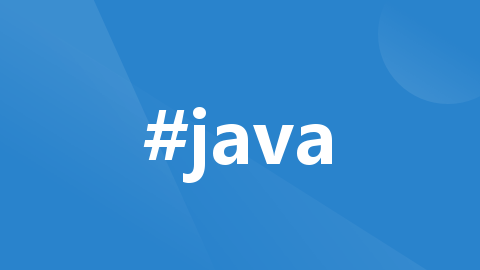
使用Java实现异步消息处理与队列消费
在实际项目中,根据具体的业务需求和性能要求选择合适的消息队列和编程模型是非常重要的。异步消息处理是一种通过消息队列(如RabbitMQ、Kafka等)来传递和处理消息的方式。它允许发送者和接收者在时间上解耦,发送者将消息发送到队列中,接收者从队列中接收并处理消息。通过异步消息处理,可以提高系统的吞吐量和响应速度,实现解耦和分布式处理。本文将介绍如何使用Java实现异步消息处理与队列消费,以及常见的
使用Java实现异步消息处理与队列消费
大家好,我是免费搭建查券返利机器人省钱赚佣金就用微赚淘客系统3.0的小编,也是冬天不穿秋裤,天冷也要风度的程序猿!
在现代软件系统中,处理异步消息和队列消费是常见的需求。通过异步消息处理,可以提高系统的吞吐量和响应速度,实现解耦和分布式处理。本文将介绍如何使用Java实现异步消息处理与队列消费,以及常见的实现方式和工具。
1. 异步消息处理概述
异步消息处理是一种通过消息队列(如RabbitMQ、Kafka等)来传递和处理消息的方式。它允许发送者和接收者在时间上解耦,发送者将消息发送到队列中,接收者从队列中接收并处理消息。这种模型适用于需要处理大量消息、实现高可用性和扩展性的应用场景。
2. Java中的异步消息处理
在Java中,可以使用多种方式实现异步消息处理,包括使用消息队列、异步任务、事件驱动等。
2.1 使用Spring Boot与RabbitMQ实现消息队列
package cn.juwatech.async;
import org.springframework.amqp.core.Queue;
import org.springframework.amqp.rabbit.annotation.EnableRabbit;
import org.springframework.amqp.rabbit.annotation.RabbitListener;
import org.springframework.boot.SpringApplication;
import org.springframework.boot.autoconfigure.SpringBootApplication;
import org.springframework.context.annotation.Bean;
@SpringBootApplication
@EnableRabbit
public class RabbitMQExample {
public static void main(String[] args) {
SpringApplication.run(RabbitMQExample.class, args);
}
@Bean
public Queue queue() {
return new Queue("myQueue");
}
@RabbitListener(queues = "myQueue")
public void processMessage(String message) {
// 异步处理收到的消息
System.out.println("Received message: " + message);
}
}
2.2 使用Kafka实现消息生产与消费
package cn.juwatech.async;
import org.apache.kafka.clients.consumer.ConsumerConfig;
import org.apache.kafka.clients.consumer.KafkaConsumer;
import org.apache.kafka.clients.producer.KafkaProducer;
import org.apache.kafka.clients.producer.ProducerConfig;
import org.apache.kafka.clients.producer.ProducerRecord;
import org.apache.kafka.common.serialization.StringDeserializer;
import org.apache.kafka.common.serialization.StringSerializer;
import java.util.Collections;
import java.util.Properties;
public class KafkaExample {
private static final String TOPIC = "myTopic";
private static final String BOOTSTRAP_SERVERS = "localhost:9092";
public static void main(String[] args) {
// 生产者发送消息
Properties producerProps = new Properties();
producerProps.put(ProducerConfig.BOOTSTRAP_SERVERS_CONFIG, BOOTSTRAP_SERVERS);
producerProps.put(ProducerConfig.KEY_SERIALIZER_CLASS_CONFIG, StringSerializer.class.getName());
producerProps.put(ProducerConfig.VALUE_SERIALIZER_CLASS_CONFIG, StringSerializer.class.getName());
KafkaProducer<String, String> producer = new KafkaProducer<>(producerProps);
ProducerRecord<String, String> record = new ProducerRecord<>(TOPIC, "key", "Hello from Kafka!");
producer.send(record);
producer.close();
// 消费者接收消息
Properties consumerProps = new Properties();
consumerProps.put(ConsumerConfig.BOOTSTRAP_SERVERS_CONFIG, BOOTSTRAP_SERVERS);
consumerProps.put(ConsumerConfig.GROUP_ID_CONFIG, "group-id");
consumerProps.put(ConsumerConfig.KEY_DESERIALIZER_CLASS_CONFIG, StringDeserializer.class.getName());
consumerProps.put(ConsumerConfig.VALUE_DESERIALIZER_CLASS_CONFIG, StringDeserializer.class.getName());
KafkaConsumer<String, String> consumer = new KafkaConsumer<>(consumerProps);
consumer.subscribe(Collections.singletonList(TOPIC));
while (true) {
consumer.poll(Duration.ofMillis(100)).forEach(record -> {
// 异步处理收到的消息
System.out.println("Received message: " + record.value());
});
}
}
}
3. 使用异步消息处理的好处
- 解耦性:发送者和接收者之间通过消息队列解耦,不直接依赖于对方的状态和可用性。
- 扩展性:通过增加消费者实例来扩展系统的处理能力,实现水平扩展。
- 容错性:消息队列提供持久化机制,确保消息不会丢失,即使消费者暂时不可用也能保证消息的可靠传递。
4. 结语
通过本文的介绍,我们了解了在Java项目中如何实现异步消息处理与队列消费。选择合适的消息队列和处理方式可以极大地提高系统的性能和可维护性。在实际项目中,根据具体的业务需求和性能要求选择合适的消息队列和编程模型是非常重要的。希望本文能为您在实现异步消息处理时提供一些参考和指导。
微赚淘客系统3.0小编出品,必属精品!
更多推荐
 已为社区贡献8条内容
已为社区贡献8条内容






所有评论(0)